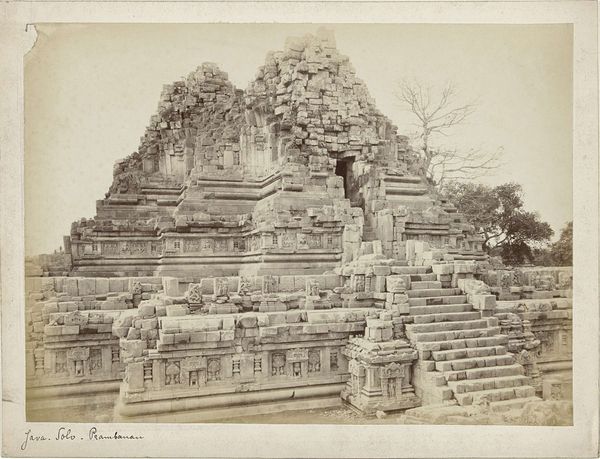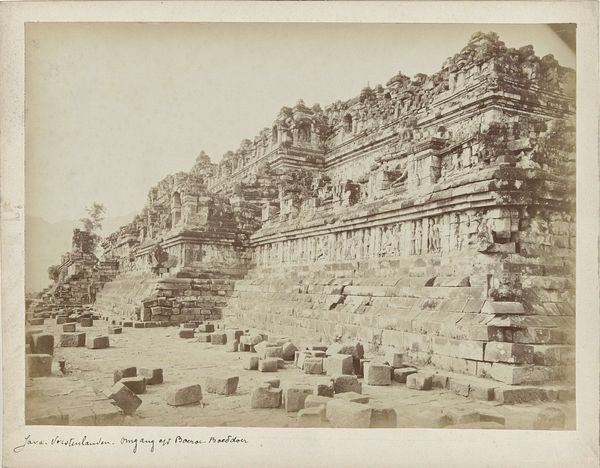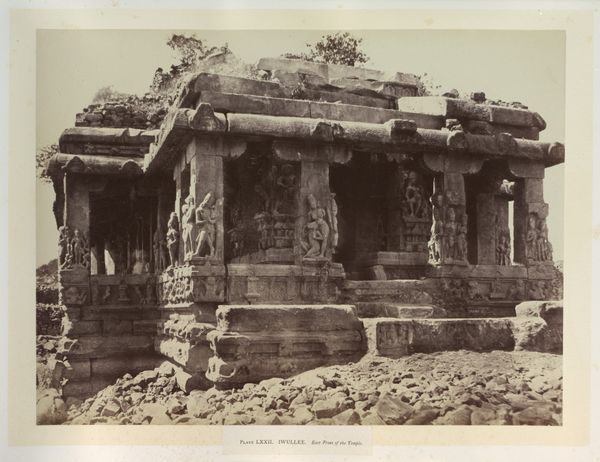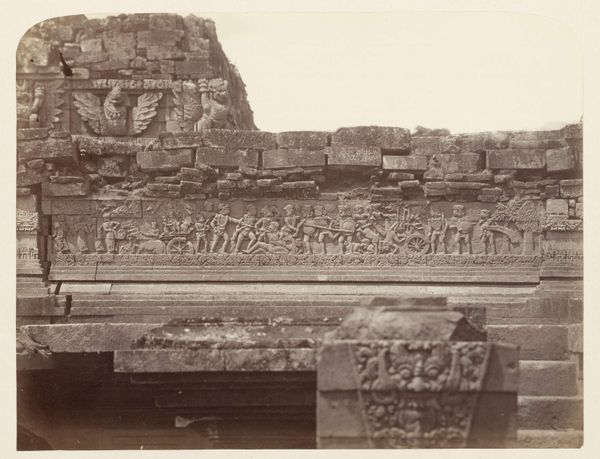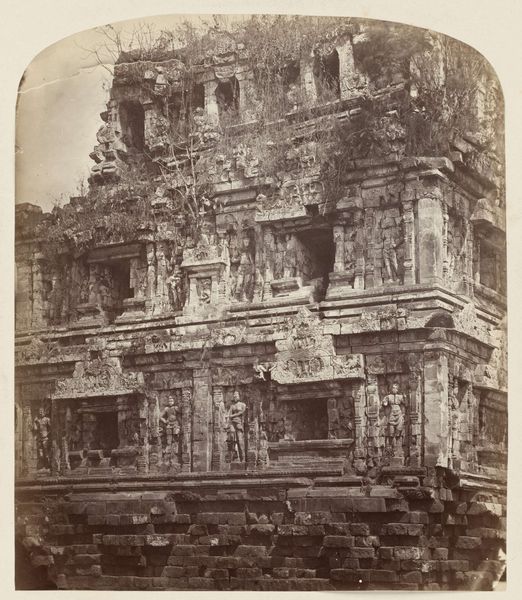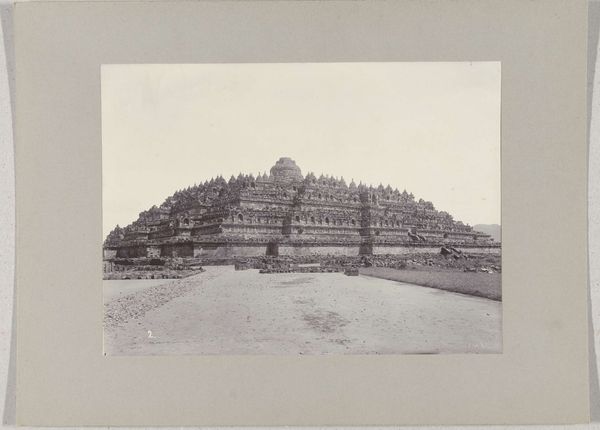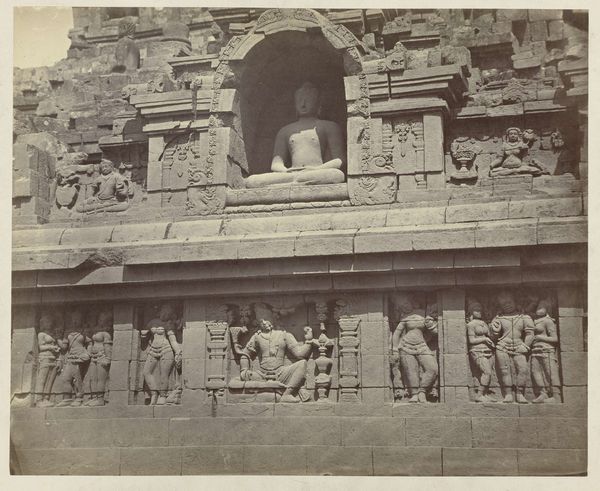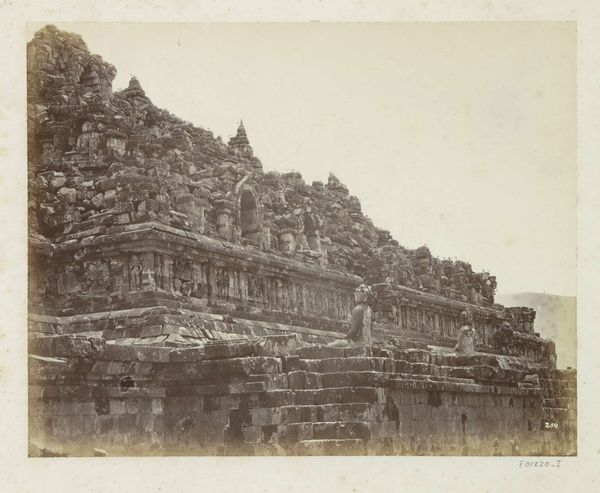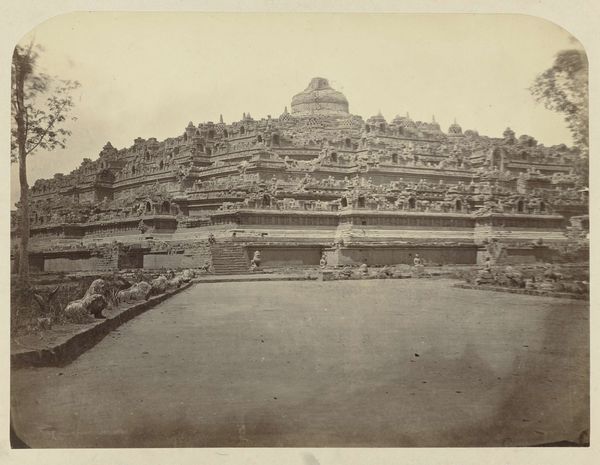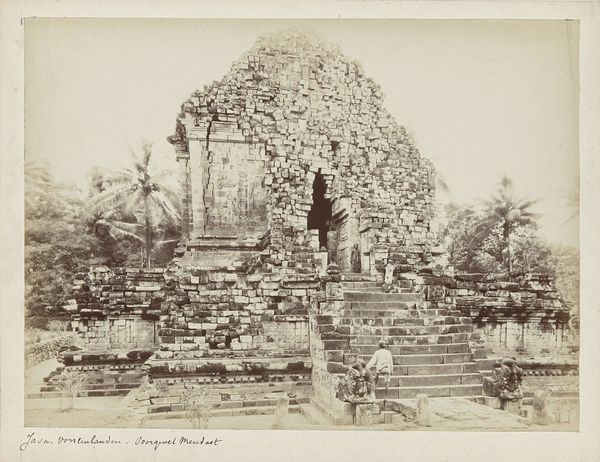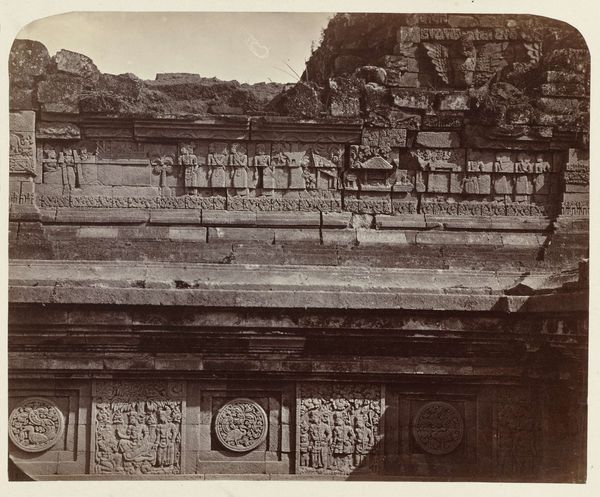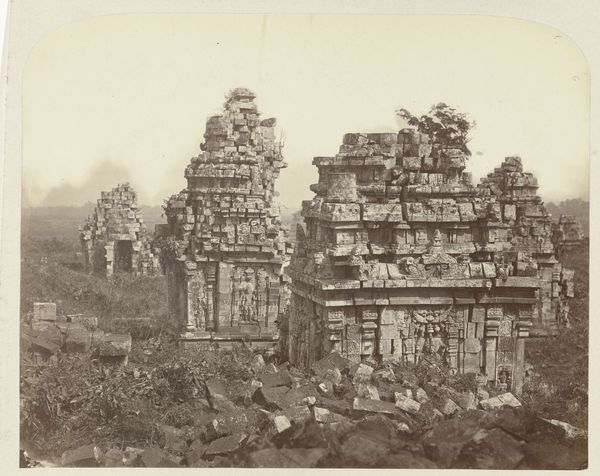
print, relief, photography, site-specific
#
narrative-art
# print
#
asian-art
#
relief
#
photography
#
ancient-mediterranean
#
site-specific
Dimensions: height 165 mm, width 225 mm
Copyright: Rijks Museum: Open Domain
Curator: Looking at this photograph by Onnes Kurkdjian, taken in 1904, we see a relief at the Prambanan temple complex in Indonesia. Editor: My initial impression is of dense, layered storytelling frozen in stone, evoking a profound sense of the ancient world's weight and wisdom. Curator: It's remarkable to consider the labor involved in producing this relief. Think of the quarrying, carving, and transport of the stones. The means of production are just as important as the narrative depicted. It must have been a massive operation, revealing the socio-economic conditions of the time. Editor: Indeed, and situated within those socio-economic conditions is the visual language chosen. These aren’t just materials formed by labor; they are deliberate articulations of power, spirituality, and societal structure reflecting hierarchies inherent in the communities of that era. It makes you wonder whose stories were centered and whose were erased. Curator: Absolutely. The materiality, particularly the locally sourced volcanic rock, is crucial. The type of stone available dictated the scale, detail, and longevity of the reliefs. This photograph itself, though, is also a document of its time – part of the colonial project of documenting and consuming Southeast Asian heritage. Editor: Right. The act of photographing the reliefs and disseminating these images back to the West highlights the uneven power dynamics inherent in that exchange. Who was this visual record intended for, and what narrative about Indonesian culture and history did it seek to establish in the Western imagination? Curator: We can also see the signs of time in the relief's degradation, hinting at the environmental impact on these historical materials. The erosion patterns also suggest the need for continued conservation efforts and funding. Editor: The question becomes, who decides what and how to conserve? What ideologies inform those decisions, and how do we ensure diverse voices are part of the preservation dialogue, ensuring these reliefs don't solely represent colonial or Western interpretations? Curator: Seeing this really emphasizes how much is intertwined with every object. Thinking about it makes you consider the ethical layers when visiting or studying art from other cultures. Editor: Exactly. By engaging with art like this, we can challenge the historical gaze and push for a more just understanding of ancient art and its ongoing legacy.
Comments
No comments
Be the first to comment and join the conversation on the ultimate creative platform.
